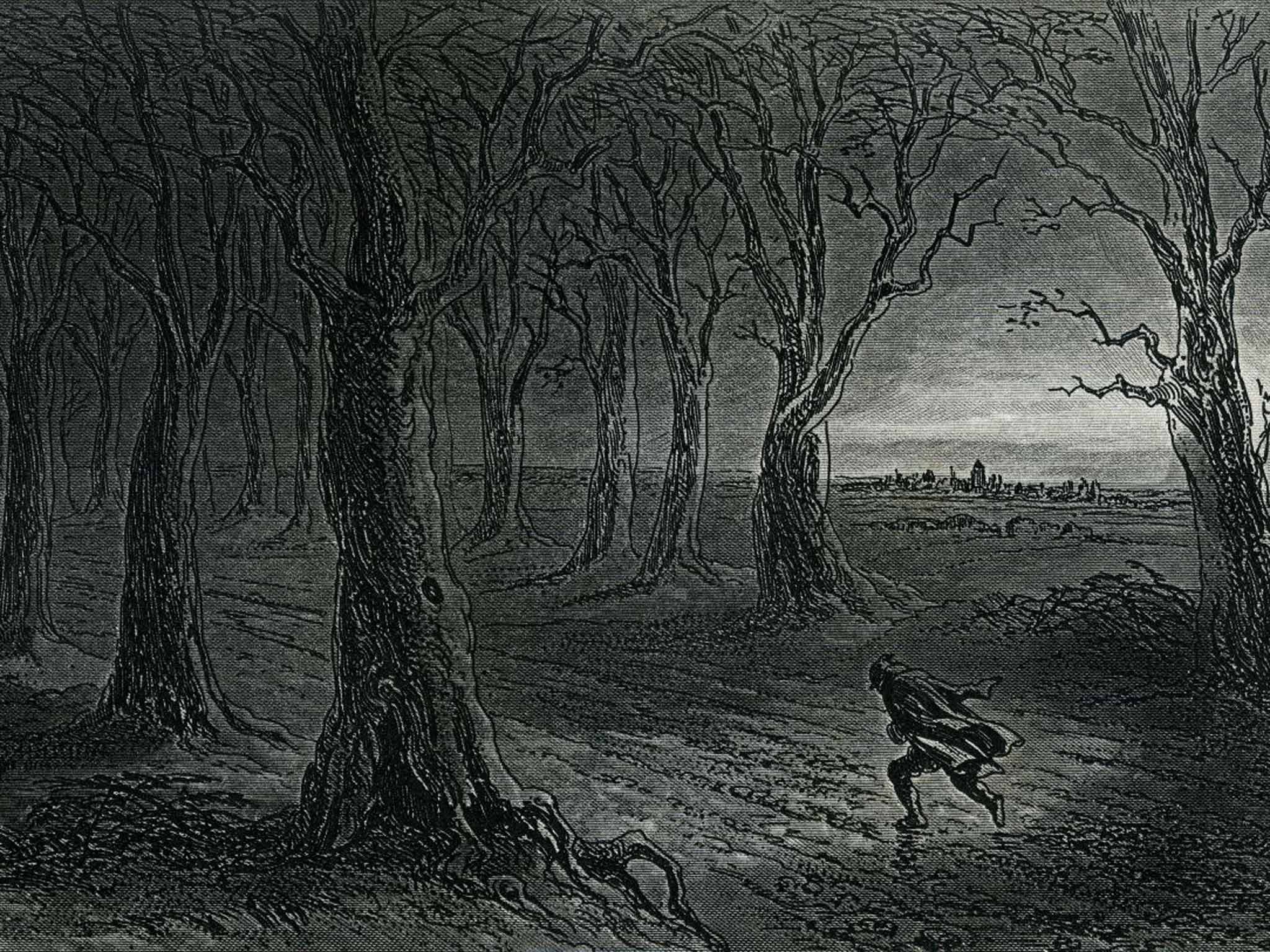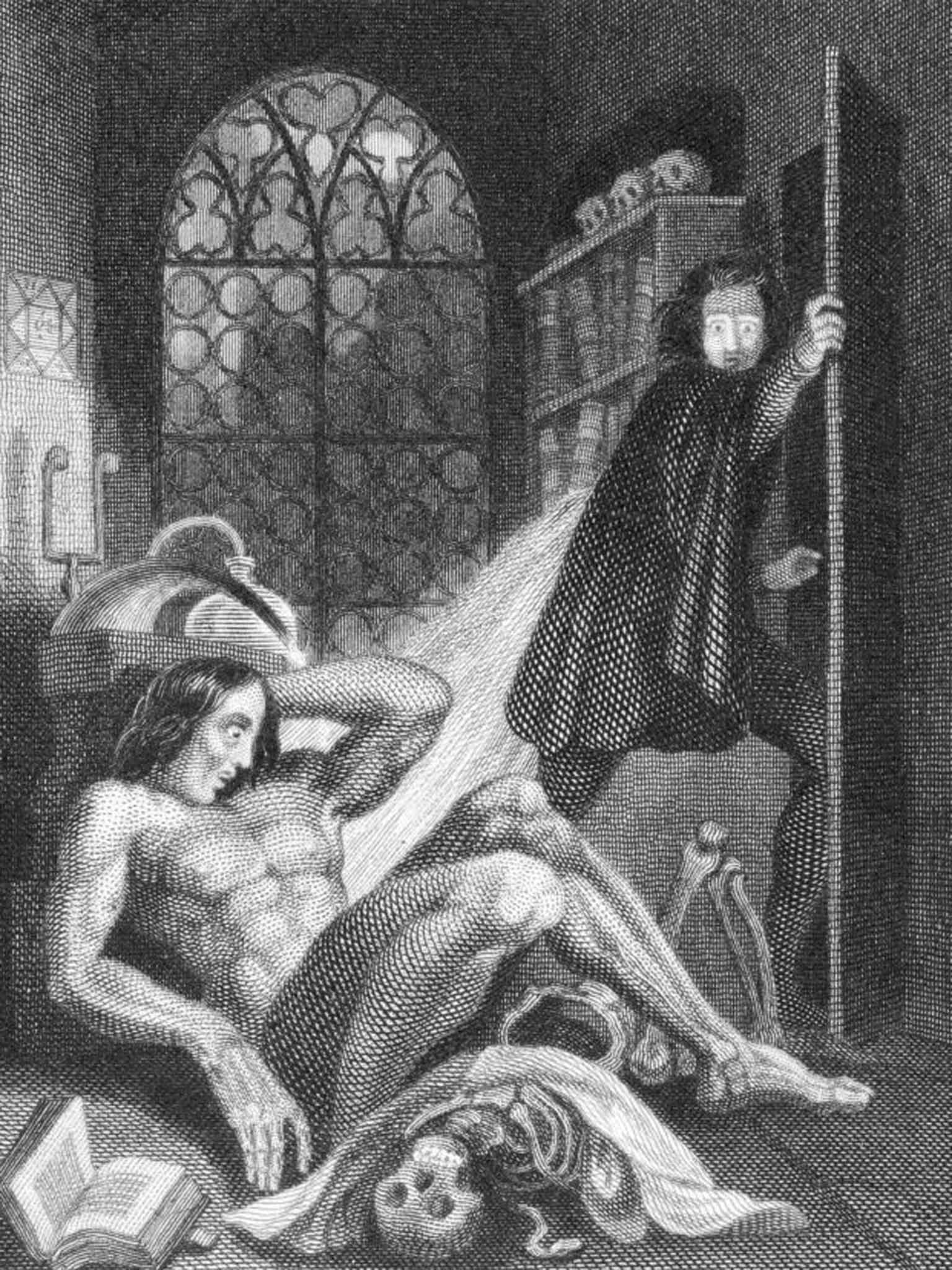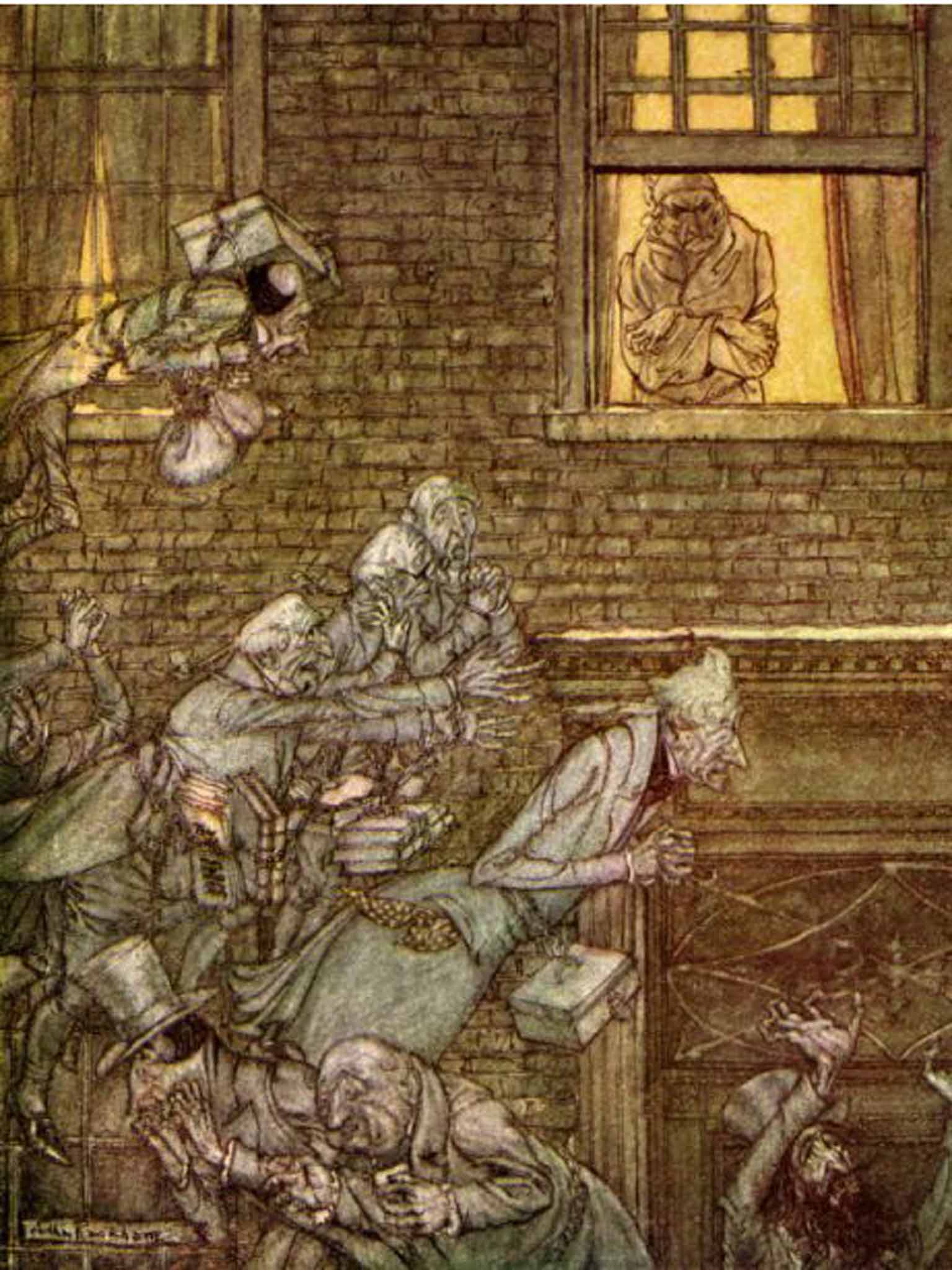Christmas ghost stories: A history of seasonal spine-chillers
As the chill of these dismal days begins to bite and you settle in front of a roaring fire, apparently safe from harm, it's the perfect time for a terrifying tale or two. Keith Lee Morris, himself a master of the dark art, looks at

Your support helps us to tell the story
From reproductive rights to climate change to Big Tech, The Independent is on the ground when the story is developing. Whether it's investigating the financials of Elon Musk's pro-Trump PAC or producing our latest documentary, 'The A Word', which shines a light on the American women fighting for reproductive rights, we know how important it is to parse out the facts from the messaging.
At such a critical moment in US history, we need reporters on the ground. Your donation allows us to keep sending journalists to speak to both sides of the story.
The Independent is trusted by Americans across the entire political spectrum. And unlike many other quality news outlets, we choose not to lock Americans out of our reporting and analysis with paywalls. We believe quality journalism should be available to everyone, paid for by those who can afford it.
Your support makes all the difference.Possibly the most famous story about telling stories in all of English literature begins on Lake Geneva, Switzerland, in June 1816. During a historically wet, cold and gloomy summer – 1816 would become known, in fact, as "The Year Without a Summer" – two of the leading poets of the age, Lord Byron and Percy Shelley, were vacationing near each other, Shelley with his then-future wife Mary and her stepsister Claire Clairmont (who was, in fact, pregnant with Byron's child at the time), and Byron with his friend and physician John Polidori (who would go on to write what is now often referred to as the world's first vampire novel).
There were no excursions in the woods or on the lake, no romps through fields. The days were cold and dreary and spent indoors, and Byron, inspired by a volume of ghost stories he had received from a friend, decided that each of his companions should write a ghost story. Polidori struggled with one about an old woman who peeks through keyholes on unspeakable acts. There is no record of Claire Clairmont even trying. Percy Shelley was never really one for narrative and he, too, quickly gave up the ghost, so to speak. Byron came up with a partial tale about a vampire that would eventually serve as the basis for Polidori's novel.
Only Mary Shelley succeeded, with a tale that began: "It was on a dreary night of November…" When the story later became the novel Frankenstein, the author changed the story's opening to "December 11th, 17--." Clearly, in spite of the inspiration coming in summer, the frigid weather had a dramatic effect on her, transporting her and her tale to the depths of winter. And so the novel begins in the Arctic, with "stiff gales" and "floating sheets of ice", and ends with Frankenstein's monster, doomed to a slow death, receding into the distance on an ice floe. Frankenstein is, in essence, a winter's tale.
The notion that cold, snowy days are the best for stories designed to frighten and appal us goes back at least to the early 17th century. In Shakespeare's The Winter's Tale, written in 1611, Mamillius says: "A sad tale's best for winter. I have one / of sprites and goblins." But it was in the Victorian era that telling ghost stories became an indispensable custom of the Christmas season – indeed, the genre's popularity had been dwindling somewhat until writers such as Wilkie Collins and Elizabeth Gaskell breathed new life into it. Families relished the chance to gather around the hearth on Christmas Eve to try to scare one another half to death with tales of mysterious, menacing apparitions or, in one story by MR James, a master of the genre, a "vengeful ghost boy… with fearfully long nails". The practice even finds its way into Christmas songs. A verse in "It's the Most Wonderful Time of the Year" mentions "scary ghost stories" right alongside singing to neighbours and hanging mistletoe as the very substance of the season.
One of the most familiar examples of the Christmas ghost story is Charles Dickens's A Christmas Carol, which he wrote in 1843 as a way of cashing in on the renewed demand for the form. The novel amounts to an acknowledgement of the ghost story's seasonal ubiquity. It's not just a ghost story that one could tell at Christmas, but – with Scrooge sitting in his armchair as his life's story is unfurled before him – it is a story about ghost stories at Christmas, a kind of meta-Christmas ghost story, if you will.

The Turn of the Screw, the US Anglophile Henry James's own take on the Christmas tale, published in 1898, operates in much the same fashion, structured as it is to position its readers by the Yuletide hearth listening to tales of horror. It begins: "The story had held us, round the fire, sufficiently breathless, but except the obvious remark that it was gruesome, as on Christmas Eve in an old house a strange tale should essentially be, I remember no comment uttered till somebody happened to note it as the only case he had met in which such a visitation had fallen on a child." If the last words of that sentence don't cause your hair to stand on end, you're probably simply not susceptible to ghost stories.
The tale, which relates a series of strange events that befall a young governess, centres on the supposed – and that word is key – possession of a boy by the spirit of a hostile figure named Peter Quint. To begin with a recounting of the telling of the story around a fire on Christmas Eve would, James decided, be the most effective context for the story's macabre twists and turns, part of a framework designed to make the whole somehow more believable, more unsettlingly so – to ensure that the chill sinks deep down into the reader's bones.
Maybe the impulse to thrill each other with these tales of the grisly and supernatural is spurred by Halloween; as the leaves die off and fall to the ground before disappearing, we observe a holiday that features witches, ghosts and demons – a veritable festival of the dead. That sets the mood and liberates the spirits which accompany us through the following months as the days get colder, and Jack Frost stretches his fingers across the window pane. Winter is tantalisingly terrifying, and it's undoubtedly to do with its nearness to death – for, in the days before antibiotics, these were the months that would claim the most lives.

We relish the sense that our warm, happy homes, with their firmly closed doors and crackling fires, can keep death's frigid hand from our throats. So the writing that truly haunts us is almost always set in cold, barren landscapes. Consider this from Edgar Allan Poe's narrative poem "The Raven", the tale of a lover's death and the agonising chant of an avian visitor, who tells the narrator, over and over, that his departed love will appear to him "nevermore": "Ah, distinctly I remember it was in the bleak December / And each separate dying ember wrought its ghost upon the floor." Or this, from Samuel Taylor Coleridge's long poem "Christabel", ostensibly about a ghostly visitor and replete with unnerving omens, which served as an influence for Poe's eerie tales: "The night is chill; the forest bare / Is it the wind that moaneth bleak?" The list goes on.
One of my favourite winter tales is the short story "Silent Snow, Secret Snow" by Conrad Aiken, published in 1934. It is about a boy who lapses into a state of schizophrenia, a condition which – due to new and deeper scientific investigations in the early 20th century – captured the public imagination with stories of hallucinatory voices and "unnatural" behaviour. The dream world into which Aiken's protagonist slips becomes – silently, slowly, inch by inch – engulfed in bright white. The most terrifying aspect of the story is how quietly it proceeds, how the snow seems literally to settle in the reader's mind, exerting a chilling, mesmerising pressure much like that experienced by the boy himself: "The hiss was now becoming a roar – the whole world was a vast moving screen of snow – but even now it said peace, it said remoteness, it said cold, it said sleep."
And we're all familiar with the story told in The Shining – whether in Stephen King's original novel or Stanley Kubrick's film adaptation – with the vast blanketed spaces surrounding the Overlook Hotel, and their eerie, transforming solitude. As Jack Torrance loses his grip on reality, the mood darkens and the tension increases in line with the dropping temperature and the rapidly layering snow. The result is perhaps the world's most celebrated case of "cabin fever".
Even a story that isn't intended to be scary, such as James Joyce's "The Dead", from 1914's Dubliners, distils haunting effects from its winterscape. The final scene is the telling of a story, narrated by the main character's wife, about her first love, a man named Michael Furey, who died for her love by standing outside her window in a snowstorm and contracting pneumonia. The main character, Gabriel Conroy, listens to the melancholy story, in which his wife reveals that she never truly loved him, while he stands at a window himself and watches the snowflakes "falling faintly through the universe and faintly falling, like the descent of their last end, upon all the living and the dead". So apt is Joyce's tale for this time of year that, until 28 December, the Sam Wanamaker Playhouse at Shakespeare's Globe in London is staging a candlelit reading of the short story as part of its Winter's Tale season, with Joyce's words, read by the actor Aidan Gillen, set to an unsettling piano score played by Feargal Murray. This is the second year in a row that the Wanamaker has hosted an adaptation of the tale; it's becoming something of a tradition.
How many other scenes have we read in which characters observe the snow through a window? Time and again, writers have called on wintry images to evoke feelings of dread, emptiness, loss, and isolation. But the trope can also be used to reverse effect – to emphasise the warmth of the fire and the comforts of the home, as in this passage from the French writer Jean Giono's Joy of Man's Desiring, published in 1936: "The fire roared. The water boiled. The shutter creaked. The pane cracked in its putty with the cold… There was a beautiful morning over the earth. The sun was daring to venture into the sky… The enlightenment was coming from the warmth, the fire, the frost, the wall, the window pane, the table, the door rattling in the north wind…"
Winter's ability to capture our imagination is at its strongest precisely when we are the farthest removed from its more harmful aspects. Take this passage from Eowyn Ivey's 2011 story The Snow Child, set in a frozen Alaskan landscape in the early 1900s: "Through the window, the night air appeared dense, each snowflake slowed in its long, tumbling fall through the black. It was the kind of snow that brought children running out their doors, made them turn their faces skyward, and spin in circles with their arms outstretched." The jovial imagery belies its melancholy context, for Ivey's novel is about an elderly man and wife who are unable to conceive a child and who live with their grief in a hostile landscape – often brutally so. In a rare moment of levity and togetherness they construct a little girl out of snow. The next morning, they find that she has become real – as if by magic. The story, which combines one of nature's most deep-seated anxieties about fertility, or its lack, with a primitive distrust of intruders and that which cannot be rationalised, is based on an old Russian folk tale; Ivey's retelling demonstrates how enduring the appeal is of these icy tales, for writers and readers alike.
In some ways, the stories by which we love to be unsettled are also a form of preparation – often for the very worst. Curled up in a favourite armchair, we still ourselves against the things we know can harm us. When the weather outside turns gloomy or threatening, we can crank up the heating and lighten the burden of our thoughts by turning to fantastic tales designed to mask the things that scare us most.
That summer of 1816, during which Mary Shelley and the others invented ghost stories, would turn out to be the party's final carefree season. The travellers returned to England to find that Mary's half-sister had committed suicide; Percy Shelley's first wife, pregnant with his child, drowned herself a few months later. Shelley's son from his first marriage died of a fever in 1818. In the next few years, Percy and Mary Shelley would have two children, neither of whom would reach their second birthday. Percy Shelley and Lord Byron themselves would both die within the next 10 years. Sometimes, the frightening stories we tell each other are not nearly as horrifying as the events that real life holds in store for us. In this sense, the effect is twofold: the tales transport us from our everyday anxieties at the same time as they enable us to confront them, however obliquely; they are a means to exorcise our demons by acknowledging them – in a homely environment.
But the secret lure of these tales – of the horrifying creatures we call into being, the ghosts that stalk us, and the demons that we discover at work within our own minds – is that, while the stories themselves are fictions, the underlying dangers they conjure up, and the thrill that we feel in confronting them, are in the end quite real. Think of that on a winter's night.
Keith Lee Morris's novel 'Travelers Rest' is out next month.
Join our commenting forum
Join thought-provoking conversations, follow other Independent readers and see their replies
Comments